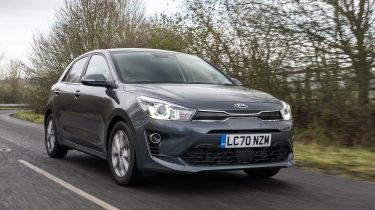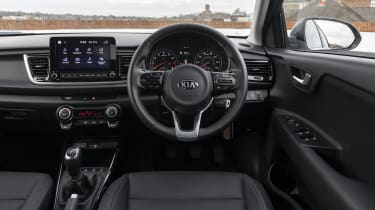Kia Rio (2017-2023) review - Interior, design and technology
While it's well built, the Rio's plain looks and a dark interior hurt the car's appeal
Kia has made no bones about its desire to push the Rio upmarket, tasking its German and Californian design studios with the challenge of injecting its supermini with some premium appeal.
With its solid proportions and smooth curves, the newcomer is clearly a more grown-up proposition than before, but it also looks rather ordinary. Under the skin, the Rio follows the same template as its mainstream rivals. There’s an all-new platform with a longer wheelbase and greater strength, but the chassis features the same strut front suspension and torsion beam rear axle as the Volkswagen Polo.
Climb aboard and it’s clear the brand’s designers have tried to give the cabin a mature look like the exterior. The updates in 2020 brought a few minor trim and material changes but nothing significant. The dashboard features a heavily sculpted design that flows into the doors, while the silver-trimmed climate controls look like they are heavily influenced by those used in Audi’s smaller models. Unfortunately looks are deceptive, and closer inspection of the plastics reveals a hard and brittle finish that’s a long way behind the class best.
Still, there’s lots of kit on the Rio 3, with sat-nav, a heated steering wheel and seats, climate control and a reversing camera. Also included is faux leather trim, but it looks and feels rather low rent.
Sat-nav and infotainment
Entry-level Rio 1 models get a standard radio unit with Bluetooth and USB connectivity. As of October 2020, 2 trim and above come with an eight-inch touchscreen display featuring Apple CarPlay and Android Auto compatibility. Top-spec GT-Line S and 3 trims improve the infotainment system further by adding built-in satellite navigation. Aside from on entry-level 1 spec, all models come with an additional USB charging port in the back – useful for keeping passengers happy.






